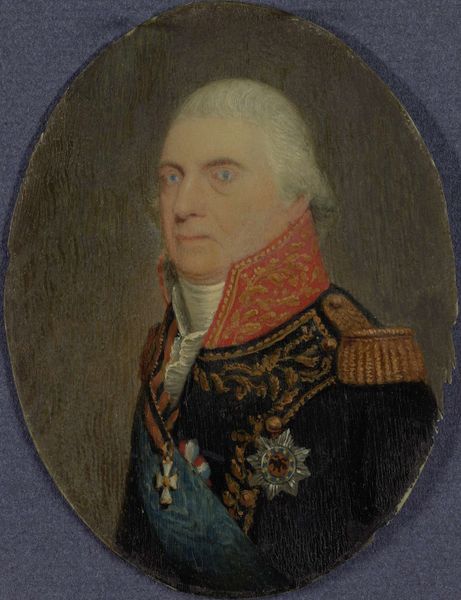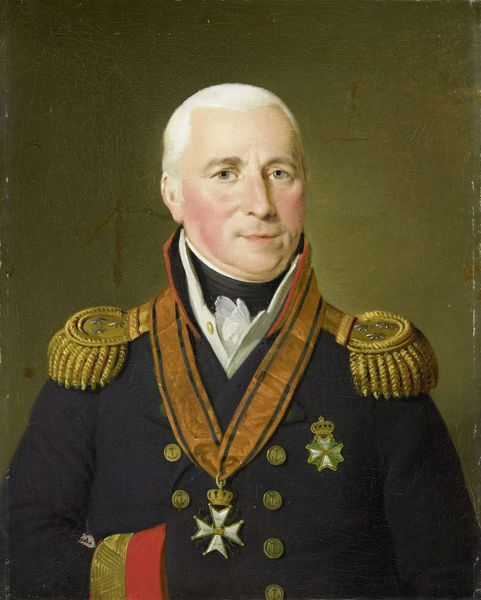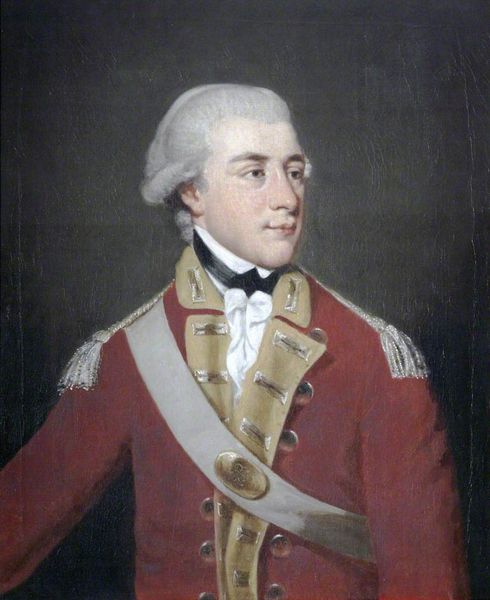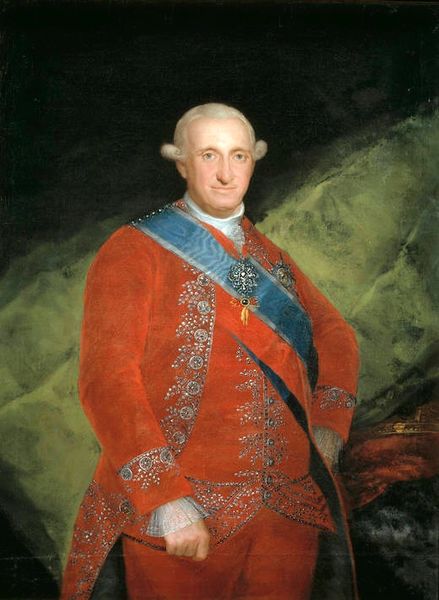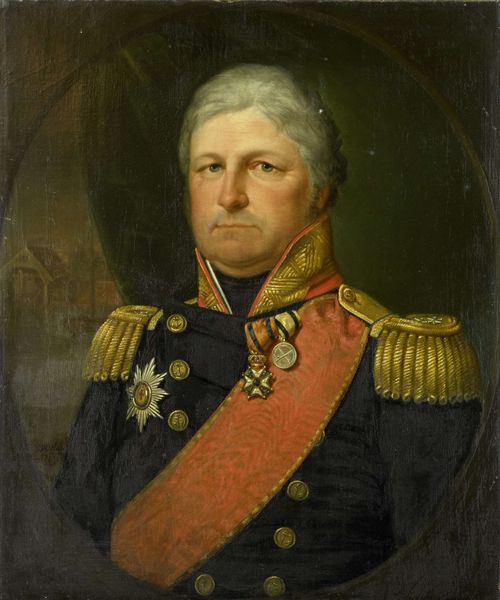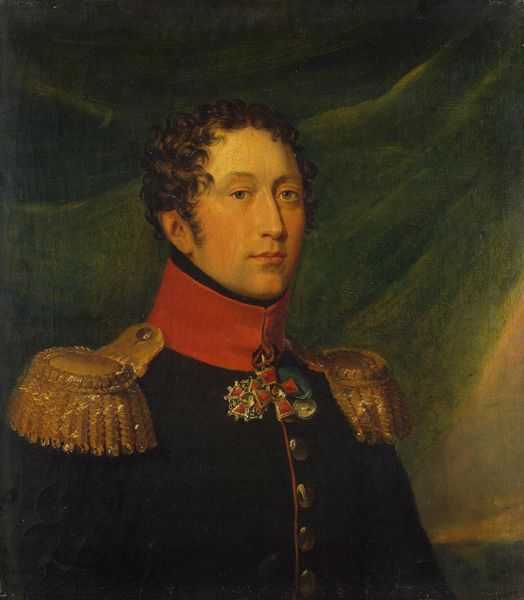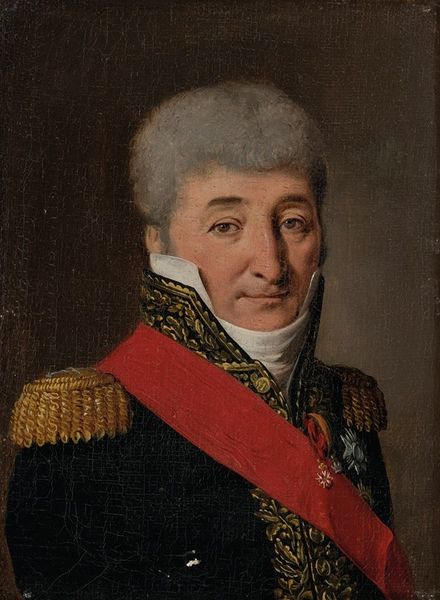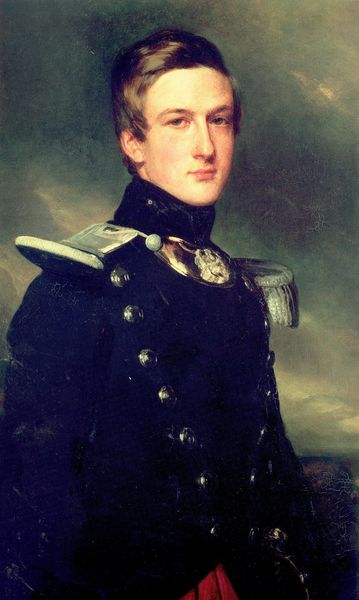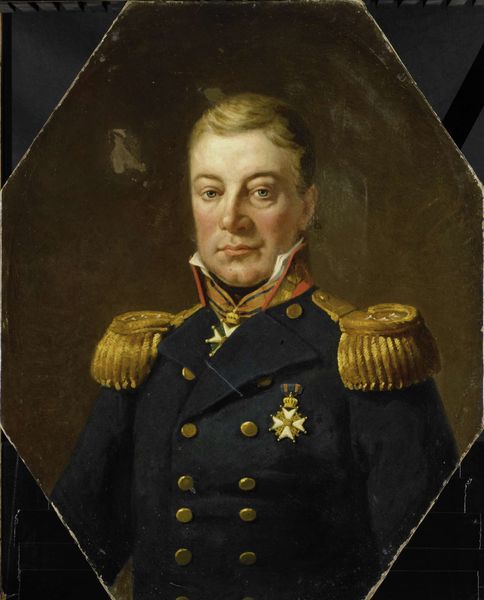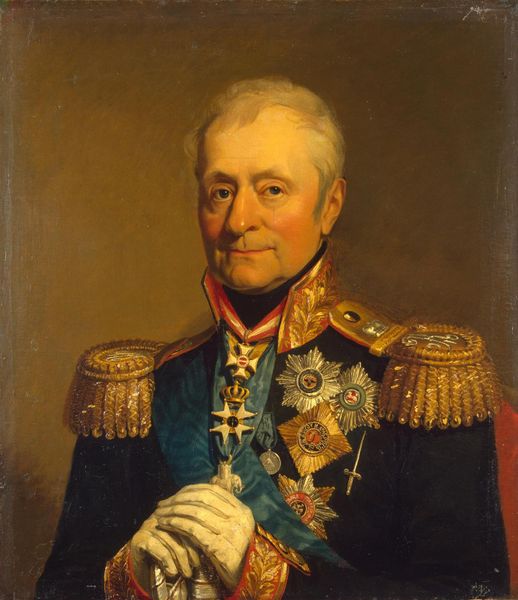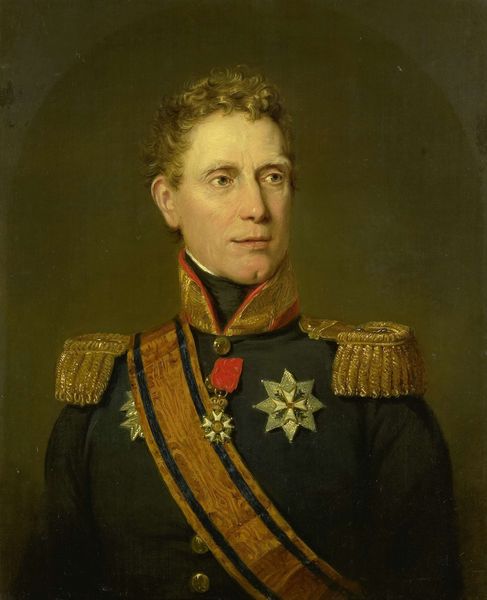
painting, oil-paint
#
portrait
#
painting
#
oil-paint
#
romanticism
#
history-painting
Copyright: Public domain
Curator: Standing before us is "Joseph Outen Bogart," an oil painting created by Rembrandt Peale in 1822. Editor: My first impression? A formal yet strangely subdued atmosphere. He seems a little… lost in thought. There is that air of romantic sensibility, yes, but the backdrop feels almost bleak despite its pastoral nature. Curator: The context is important here. This was a time when portraiture was frequently used to assert social standing. Notice the meticulous details in his military attire; the gold braid and the red sash signal rank and importance. It’s very much in line with the post-Revolutionary War ideal of portraying leaders with gravitas. Editor: I agree that the accoutrements suggest an assertion of power, but his pale, slightly averted gaze tells a different story. Look at the hand; it is posed, but seems fragile, resting rather than commanding. It hints at the internal pressures perhaps, the weight of responsibility that accompanied such a position in the early American republic. Curator: Peale was particularly skilled in capturing likenesses, aiming for an objective and accurate representation of his sitter, although filtered through the artistic ideals of the time, such as a noble countenance or posture. You’ll often see these classical influences subtly woven into his portraits. Editor: Right, and this tension, between the projected image and possible internal realities is especially intriguing. I think, in engaging with artworks such as this one, it's important to question the romantic narrative attached to military glory, because many were excluded. We also have to ask whose story is considered "history" in these periods. Curator: That's an insightful reading. Thinking about the public image these men were trying to cultivate versus the day to day of building the institutions of the country certainly shifts how we look at it. Editor: Yes, situating the subject’s individual experience in that political and historical framework provides greater context and allows us to examine whose narratives get centered. Curator: Well, reflecting on Peale's artistic ambition in the face of societal power structures and your intersectional approach is truly enriching for future engagement. Editor: Thank you. Now when viewing history painting it reminds us how relevant is to promote social dialogue between art history and society today.
Comments
No comments
Be the first to comment and join the conversation on the ultimate creative platform.
